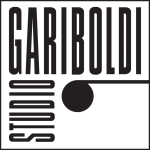May – June 2011
by Elisabetta Bucciarelli
Black and White. Dichotomy, always. From the darkness let there be light.
Now, as then, we are surrounded by darkness. Existential, human. In literature, as in life, what it purges is black, noir, night. The human condition is covered by a gloom of fear and dread. Injustice and impossibility. What remains is an exorcism that passes through the eyes and goes straight to the soul. There is no remedy for this new Middle Age. Art is the only way out. Unceasingly, the artist, creator of the beauty, moves within the age-old question of shadow/light. The form of the light, intensity and gradation. The movement of the luminosity. He finds the answers, grabs the insights, tells his knowledge: things that he was able to experience thanks to his third eye that is capable to see what our humanity can’t.
While at the end of the 1950s the painting vented colorful energy and passion on the canvases, Walter Leblanc experimented the white color. The surface that reflects everything and allows to imagine better worlds. He rolled up every single thread as if it was a metaphor of a distorted and painful existence. He fixed them in regular and orderly manner on the canvas-cushions, so that the eyes could caress and observe them from any point of view. Dreaming of resting your cheeks and hands on them.
Thus the high-luminosity white without any tint is, able to hide all the colors of the electromagnetic spectrum, becomes pure light and transforms itself into color and shadows, it vibrates according to the starting and finishing positions. Moving in front of a Leblanc work, to the right or to the left, allows to acquire multiple views.
The same painting, more paintings. The same emotion, more emotions. It is not the elegant motion of Castellani, nor the three-dimensional counterpoint of Bonalumi. Not even the lacerated wait of Fontana. It is an aesthetic step, a formal waltz, a melody of emotional spheres.
The coexistence with Leblanc’s paintings reminds us of the Nordic light, cold but constant, without structural or symbolic pollution. It gains an almost mythological order made of high heavens and distant horizons. Of frozen rivers and mirrored seas.
The scars of the earth are clearly visible in his first works of the 1958/59, where the iron dust, small bolts and twisted strings lend themselves to a first a rough hindrance of the sight and then to temper in the spins of the later works. Poetic Twisted of crosses and squares, triangles and argyles.
In motion towards a higher light.
by Jan Hoet, Gand
Leblanc wrote one day that he was comparing “plastic aesthetics” to the “classic poetry that allows poetic liberty beyond its hard and fast rules”. He, in the same way linked (his) plastic work to music, the sound of which always depends on rhythm, on measure or on counterpoint but without however excluding the melody, like dance which considers in total nimbleness the dancers anatomy. He established a fourth link, this time with architecture, which even being subject to limitations imposed by functionality, does not forget the exterior form, aesthetics. Leblanc’s painting named “informal” is the result of a tension, of an interaction of severe rules and creative liberty. He maintained, in a certain sense, a very rigid system, that he had fixed, but was always trying to overcome it in a creative way. The flexibility of the limits of this painting was continually called upon, the limitations were modified in order to become possibility. It is this “provocatory” way of working that enabled Walter Leblanc to create a work which always disturbs and intrigues, in which the rhythm, the order, the play with the series and the light, and the human perception carry out a central role. I admire the perseverance, the motivation, the extreme logic with which Lebanc gave life with the passing of the years to this work, which fluctuates halfway into it between abstract and figurative. The sensitivity which emanates is practically unspeakable. The “hard-headedness” with which Leblanc gave form to his aspirations and his desires is exceptional. He succeeded in finding a balance between extremes such as “reason” and “sensibility”, “reflection” and “intuition”. Despite his striving for “purity”, Leblanc was never a purist. The way in which he was able to reconcile the severity of formal structures and the enthusiasm of free expression typical of poetry can therefore be called unique. In an indirect way, this artist has demonstrated that logic and orderliness do not have to be clinical and sterile. He was able to create a kind of ante litteram interactive art, in which spectator contribution, whether knowingly contributing or not to recreating the work, is determining. An artist who deserves to be placed in the pantheon of international art.







